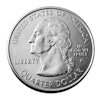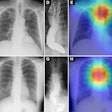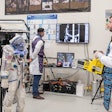
Konica Minolta Healthcare Americas has garnered U.S. Food and Drug Administration (FDA) 510(k) clearance for its dynamic digital radiography (DDR) technology.
First introduced at RSNA 2018, DDR can visualize anatomical movement in conventional x-ray studies without fluoroscopy. With DDR, clinicians can assess the dynamic interaction of anatomical structures such as tissue and bone over time, according to the vendor. The cineradiography images can also be fully annotated to help radiologists provide more detailed clinical findings, supported by diagrams.
In musculoskeletal (MSK) imaging, DDR can visualize full patterns of articulatory mobility, according to the vendor. Orthopedists and MSK specialists can view the entire MSK system in the supine and prone positions, enabling analysis of bone and articulation changes throughout the full range of motion, the company said.
The company believes DDR will also be valuable in thoracic and pulmonary imaging, offering a full view of chest, lung, and organ movement during the respiratory cycle. It also helps quantify movement, allowing the radiologist and pulmonologist to make an enhanced assessment of pulmonary function to help determine the cause of dyspnea. Clinicians can utilize the technology to assess lung function; track lung motion to detect asymmetry; and differentiate asthma, obstruction, restriction, or mixed conditions, according to Konica Minolta.
In addition to lung quantification tools, DDR also includes image processing and enhancement software and a bone suppression algorithm. Konica Minolta is currently completing studies for DDR with clinical partners and plans to release the technology commercially later this year.


















